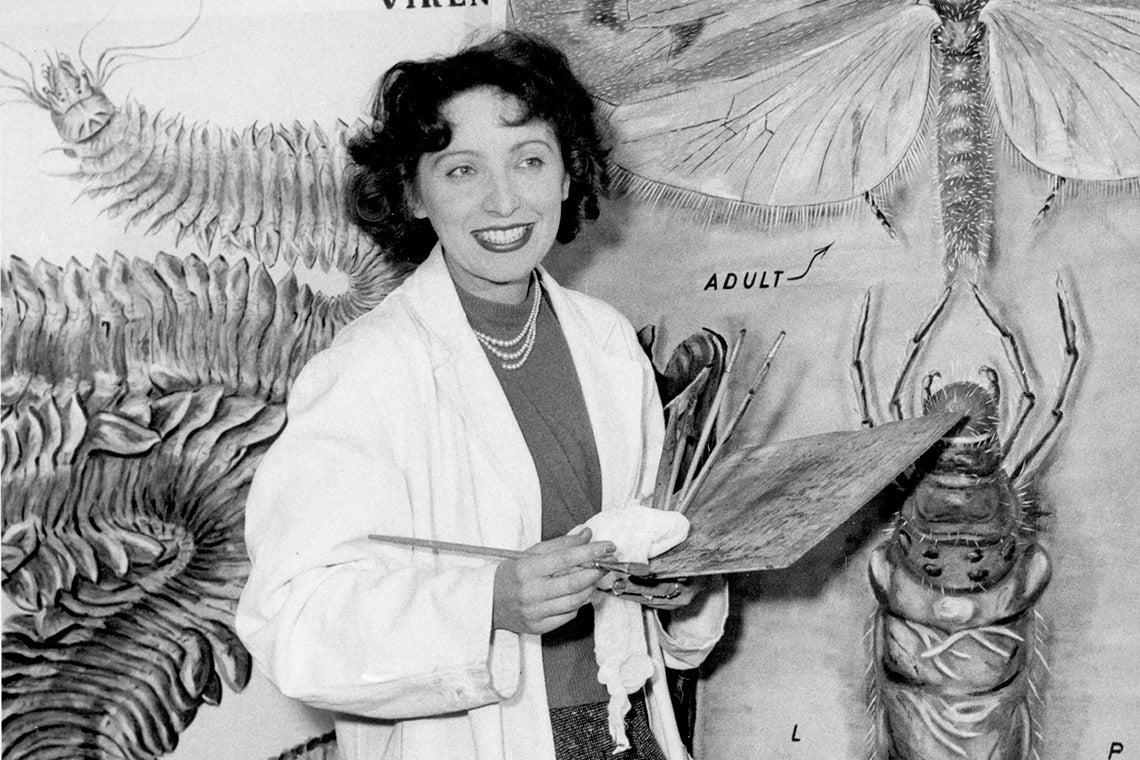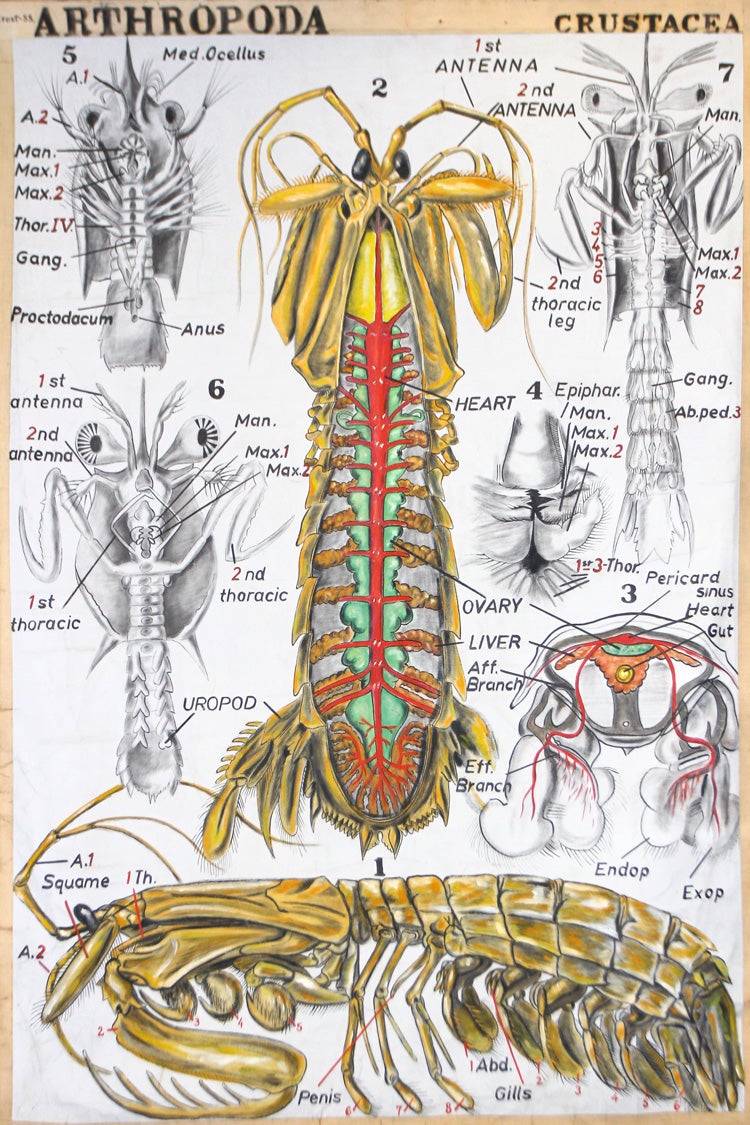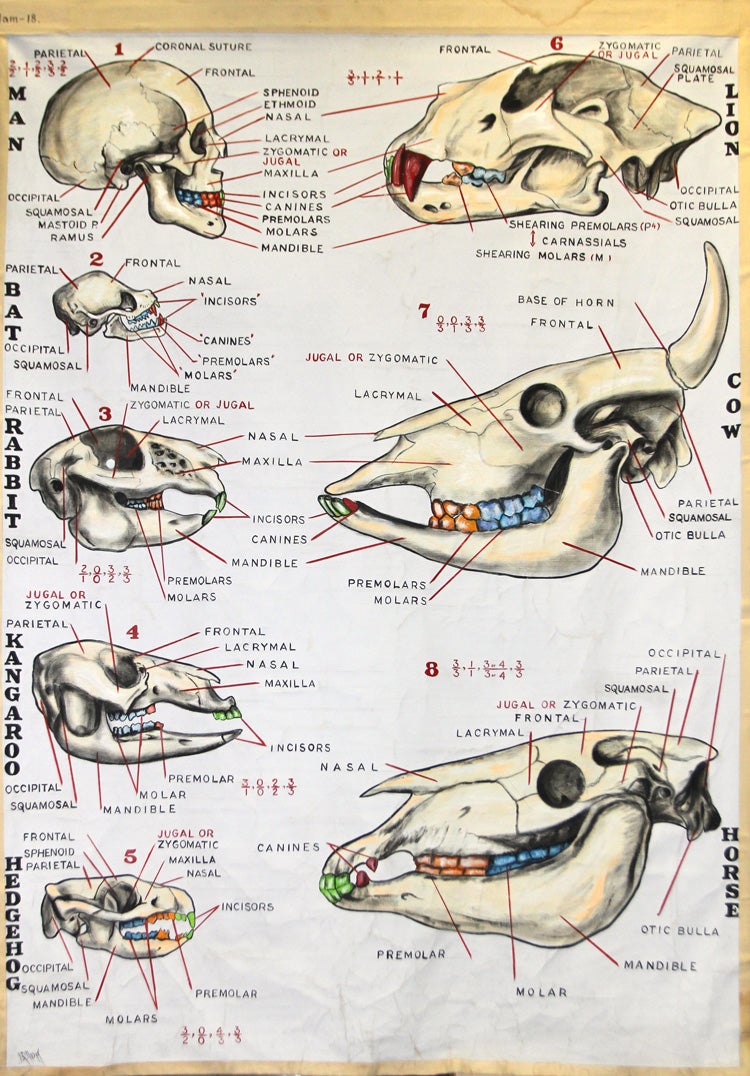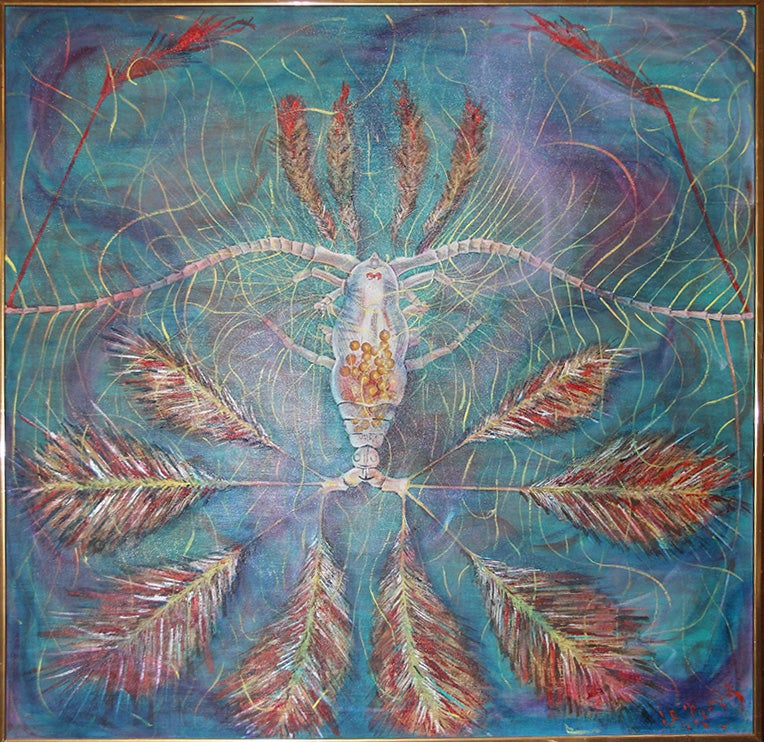
Today, sophisticated data visualization tools and advanced imaging technology make it easier than ever for scientists and instructors to create their own images for use in research and teaching.

Irene Nosyk's detailed illustration of a crustacean (University of
Toronto Archives)
But prior to the advent of this technology, it was the job of gifted scientific illustrators to take data, field notes, samples and specimens and turn them into scientifically accurate illustrations for use in papers and lectures.
"When I joined the University of Toronto in 1963, the technology associated with teaching was starting to change," says Harold Harvey, a professor emeritus in the department of ecology and evolutionary biology in the Faculty of Arts & Science. "But before that, you would come to your lecture with your hand-painted wallchart - maybe four by five feet in size - hang it up at the front of the classroom and teach with it."
In what was then known as the department of zoology, those illustrations and charts were the creations of the late Irene Nosyk, a U of T staff artist from 1952 to 1976. During that time, she produced some 2,000 illustrations, paintings and wallcharts for use in publications and lectures.
It was a remarkable array of work, depicting a menagerie of organisms from marine invertebrates to insects to protozoa. She frequently sketched specimens while peering at them through a microscope. According to a 1957 Toronto Daily Star article, her work "received praise from other Canadian universities and from centres in New York."

A wallchart by Nosyk showing the skulls of various
mammals (University of Toronto Archives)
When Nosyk joined U of T, her first studio was in the botany building at 6 Queen's Park Crescent until she moved into the new Ramsay Wright Zoological Laboratories building in 1965. (A restructuring of biological sciences in the Faculty of Arts & Science saw zoology and botany reorganized into the current departments of ecology and evolutionary biology and cell and systems biology.)
Nosyk was born in Chortkiv in western Ukraine in 1928. Following the Second World War, her family moved to Prague and then to Austria where she received artistic training at the University of Innsbruck, as well as the art academy of the Austrian artist Anton Kirchmayr. As she grew as an artist, her works were included in exhibitions and she was eventually offered a scholarship in Rome.
Before she could accept and continue her artistic training, her family moved to Winnipeg in 1949. Soon after, they moved to Toronto, where her father found work as a lab assistant in U of T's department of zoology. Nosyk attended the Ontario College of Art before being hired as the zoology department's illustrator.

Nosyk's personal paintings were often
inspired by the illustrations she created
for the department of zoology (University of Toronto
Archives)
Nosyk died in 2016, but the charts and some of her related paintings are preserved at the University of Toronto Archives & Records Management Services (UTARMS) thanks to the care and forethought of Janet Mannone, the undergraduate coordinator in the department of zoology for many years; Garron Wells, former university archivist; and Marnee Gamble, special media archivist at UTARMS.
A selection of Nosyk's work is currently on display in the St. George lobby of the Ramsay Wright building - a reminder not only of her artistry and scientific acumen, but also of a bygone era of research and academia.






